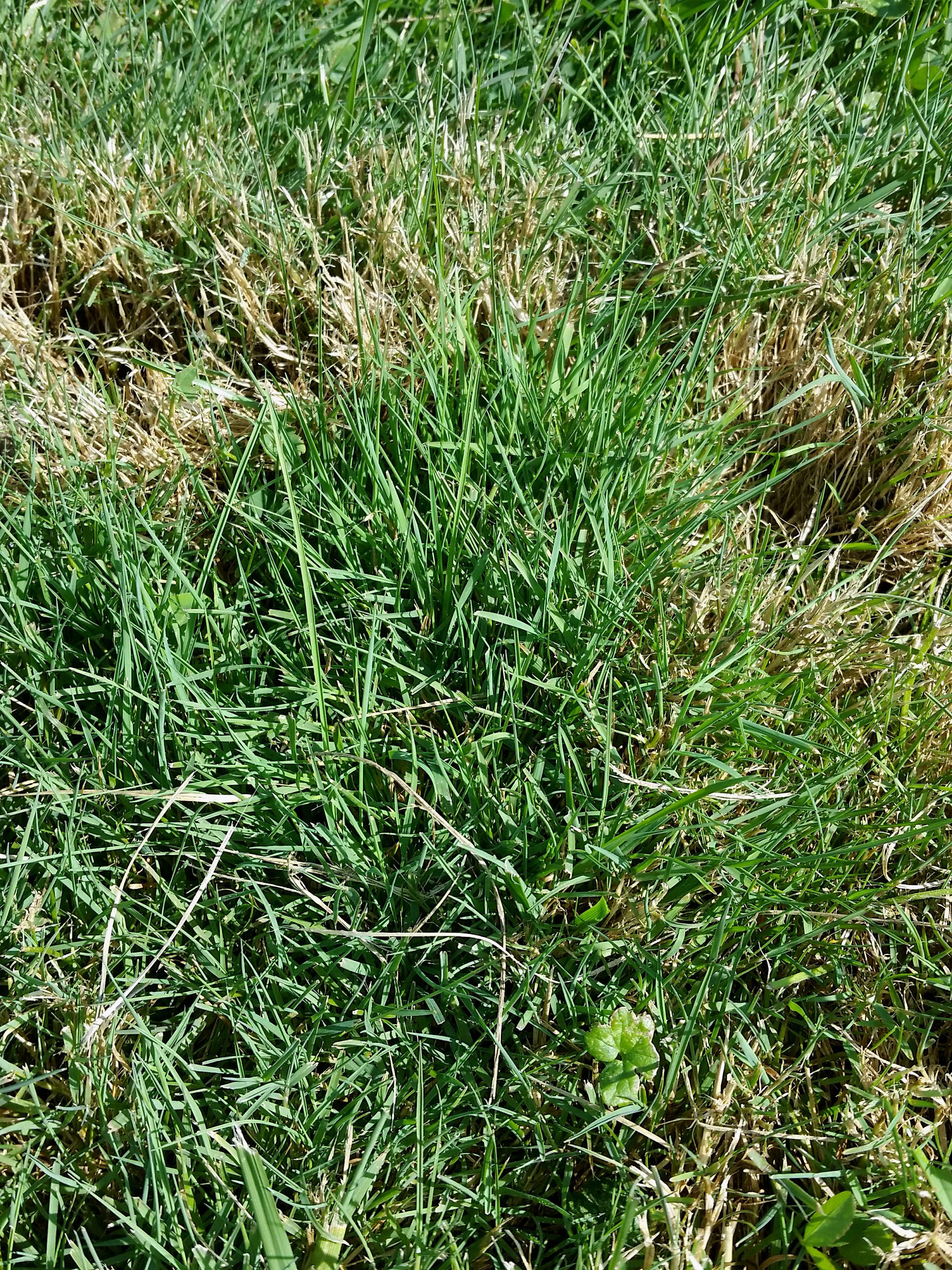Creeping Red Fescue

Creeping red fescue
Yes, red fescue is a great choice for landscaping, as it grows quickly and covers lots of ground. Because it grows well in sandy soil, it is also great for landscaping in tough spots. It is commonly used on golf courses, recreation fields and for home lawns.
Does creeping red fescue actually spread?
Red fescue has two distinct growing habits: creeping red fescue spreads very slow by very short rhizomes and Chewings fescue is a bunchgrass with an upright growth habit.
Do you need to mow creeping red fescue?
Creeping red fescue dominates shade areas while bluegrass populates sun areas. This fescue is often used in no-mow mixes. It can be allowed to grow throughout the season with minimal or no mowing.
Does creeping red fescue stay green all year?
Fescues are known for not only their drought tolerance, but also their shade tolerance, which makes Fescue a desirable species of grass because of its suitability to different conditions. Fescue grasses possess the ability to stay green all year long as well, which only adds to their desirabilty as a turfgrass species.
Does creeping red fescue turn brown in winter?
Fescue Grasses During winter, Fescue grass blades do not grow much, but the root system may continue to grow (except during the coldest weeks of winter). Fescues tend to retain some of their green color during winter, though some yellowing or browning is normal.
Does creeping red fescue turn brown in summer?
Heat and drought are two of the most common reasons why cool-season lawns turn brown (tan) in summer because they may go dormant in these conditions. Kentucky bluegrass and fine fescues (creeping red fescue and hard fescue) are the first to go dormant followed by the more tolerant tall fescue and perennial ryegrass.
Will creeping red fescue choke out weeds?
Fescues are cool-season grasses, which means they tolerate cold winters, but may suffer during hot, dry summers. Fescues have a bunching growth habit, which makes it difficult for them to fill in and choke out weeds.
Why do people not like tall fescue?
Tall Fescue is toxic to just about anything that eats it. Google it. It's toxic to dairy cows, beef cows, horses, sheep, goats, birds, grasshoppers, ants and even nematodes. It also cuts down on biodiversity because it takes up space that native biota could have occupied and it's aggressive.
What is the difference between tall fescue and creeping red fescue?
So they're all bunch type except for creeping red creeping red has small rhizomes. And it can spread
Will fescue spread to bare spots?
Augustine Grass or Creeping Red Fescue. These grasses have runners, or vine-like stolons above ground and stem-like rhizomes below ground, allowing them to expand sideways and gradually fill in any Bare Spots that may have taken residence in your lawn.
Does fescue have to be reseeded every year?
There are two main reasons why a turf type tall fescue lawn is likely to need seeding every year. First and most importantly, a fescue lawn goes through significant wear and tear throughout the year.
Does red fescue need a lot of water?
Proper Watering Tall Fescue requires a significant amount of water during the summer. Your grass needs 1-1.5 inches of water per week. Whatever does not come from natural sources like rain, will need to be made up with supplemental irrigation.
When should you plant creeping red fescue?
What is this? The best time to plant the seeds is either in the fall or spring. The temperature is cool enough in the fall and the soil is warm enough in the spring. So September and late April are both ideal for growing red fescue grass.
What kills creeping fescue?
A fall application mixture of 1 quart/acre of glyphosate, 6-7 ounces of a nonionic surfactant, plus ammonium sulfate (17 pounds per 100 gallons of water) will control about 95 % of the existing tall fescue stand.
Why is my creeping red fescue turning brown?
Fescue lawns turn brown and become dormant during a drought, but green up and grow with a return to cooler, wetter weather.
Should fescue be cut back in the fall?
In climates where blue fescue is evergreen, you don't need to cut them back in the spring. Everywhere else, the plants should be sheared back to a few inches from the ground to allow plenty of room for fresh new foliage to grow. Unfortunately, blue fescue can be a fairly short-lived perennial.
How often do you water creeping red fescue?
With good drought tolerance, a low to moderate amount of irrigation is required. Water 1-2 times a week during the warm season as strong creeping red fescue can go dormant in the summer months if watered too little. Also, adjust irrigation frequency if Creeping Red Fescue is in full sunlight.
Does creeping red fescue have deep roots?
For this reason, creeping red fescue is considered an excellent soil stabilizer and is therefore used extensively for stabilizing slopes, banks, cuts and fills (USDA Plant Guide). However, roots are shallow with most of the root mass distributed within the top 5-15 cm.
What are the pros and cons of fescue grass?
Pros: Fine fescue grows well in acidic soils, as well as in dry and shady conditions. It is the most drought- and shade-tolerant of cool season grasses. Considered low-maintenance, it doesn't require much fertilizer. Cons: Fine fescue needs well-drained soil and does not stand up well to heat or heavy wear.
What temperature is too hot for fescue?
Once temperatures reach 77 degrees, it becomes too hot for root growth, and root growth ceases. When temperatures reach 90 degrees, it becomes too hot for shoot growth and the grasses stop growing and begin to fall dormant, with the surface grass turning a brown hue.











Post a Comment for "Creeping Red Fescue "